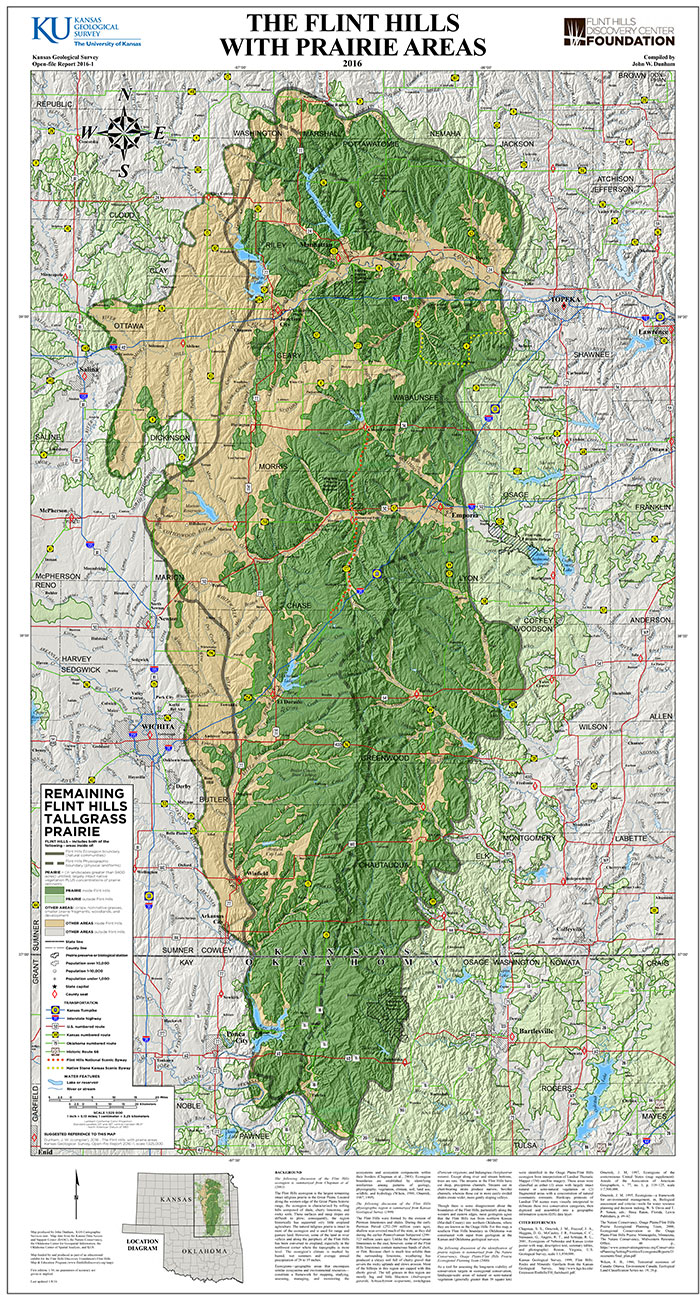
Kansas Geological Survey, Open-file Report 2016-1
KGS Open File Report 2016-1
Jan. 2016
The Flint Hills were formed by the erosion of Permian limestones and shales. During the early Permian Period (252-299 million years ago ), shallow seas covered much of the state, as they did during the earlier Pennsylvanian Subperiod (299-323 million years ago ). Unlike the Pennsylvanian limestones to the east, however, some of the Flint Hills limestones contain numerous bands of chert, or flint. Because chert is much less soluble than the surrounding limestone, weathering has produced a clayey soil full of cherty gravel that covers the rocky uplands and slows erosion. Most of the hilltops in this region are capped with this cherty gravel. The tall grasses in this region are mostly big and little bluestem (Andropogon gerardii, Schizachyrium scoparium), switchgrass (Panicum virgatum), and Indiangrass (Sorghastrun nutans). Except along river and stream bottoms, trees are rare. The streams in the Flint Hills have cut deep, precipitous channels. Streams cut in chert-bearing strata produce narrow, boxlike channels, whereas those cut in more easily eroded shales create wider, more gently sloping valleys.
Though there is some disagreement about the boundaries of the Flint Hills, particularly along the western and eastern edges, most geologists agree that the Flint Hills run from northern Kansas (Marshall County) into northern Oklahoma, where they are known as the Osage Hills. For this map, a southern Flint Hills boundary in Oklahoma was constructed with input from geologists at the Kansas and Oklahoma geological surveys.
To view this map, you will need the Acrobat PDF Reader, available free from Adobe.

Kansas Geological Survey
Placed online Jan. 14, 2016, new map Jan. 26, 2017
Comments to webadmin@kgs.ku.edu
The URL for this page is http://www.kgs.ku.edu/Publications/OFR/2016/OFR16_01/index.html